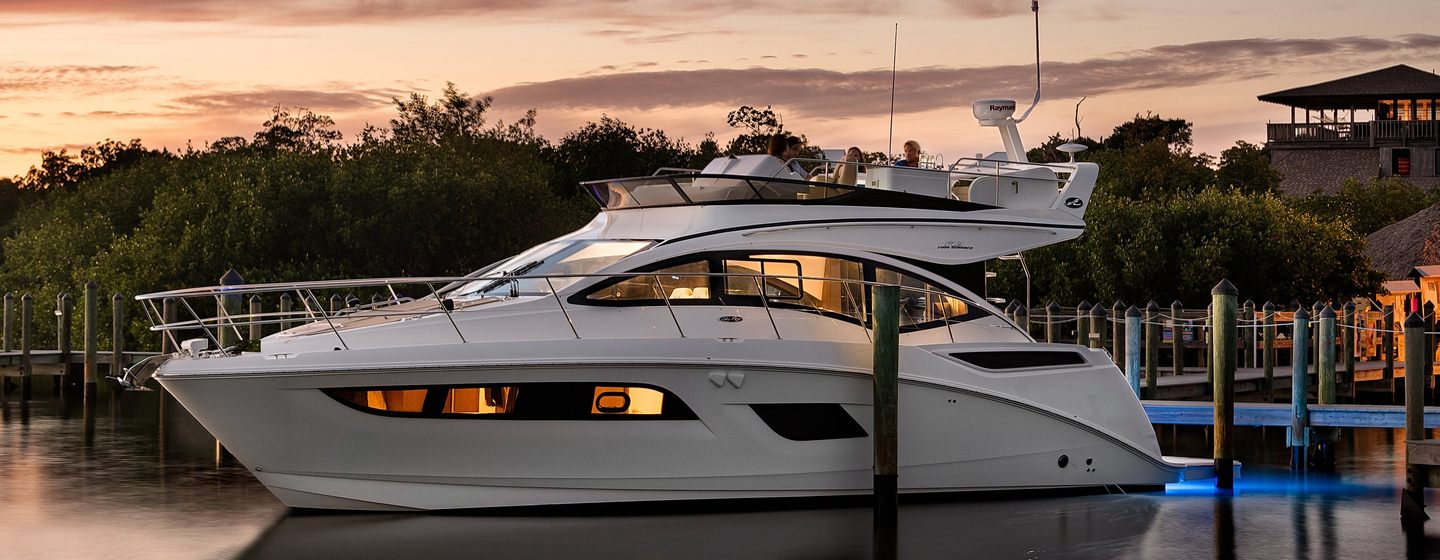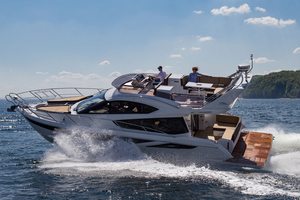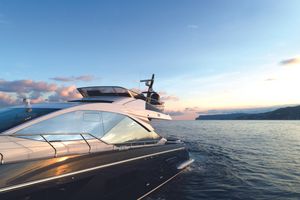Although sportsbridge and flybridge yachts may share similarities such as an elevated deck and a nearly identical profile, delving into their intricate design and layout reveals the fascinating nuances that set these two yacht types apart.
In this article, we focus on the 15-20m (50-66ft) range where the majority of crossovers occur between the two designs. Additionally, for the images, we have selected similar-sized yachts, or where possible, directly comparable models from the same builder.
Flybridge Yachts
The flybridge is a foundation of modern yachting. Starting at approximately 12m (40ft), its raised deck design creates an entire external area to enjoy day or night, at speed or rest, while leaving a separate deck with a salon below. This design is well known for its clever use of glass and its luxurious interior spaces.
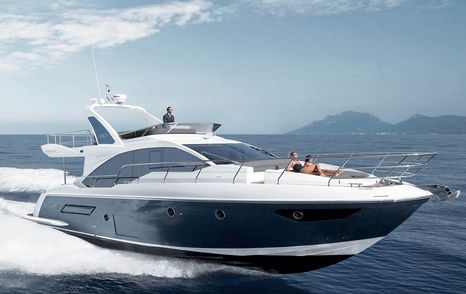
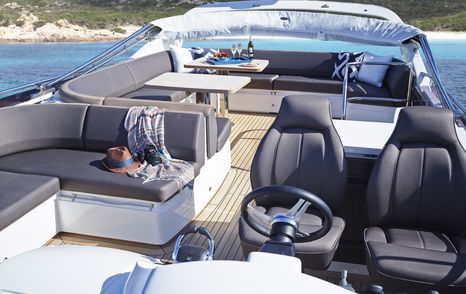
Central to these vessels is the elevated flybridge deck, an outdoor space that promises relaxation, al fresco dining, and uninterrupted views. These yachts are meticulously crafted both inside and out, offering sumptuous cabins, expansive saloons, and cutting-edge amenities to ensure that every moment spent aboard is a blend of comfort and indulgence.
Performance is also a key hallmark of flybridge yachts. Engineered for smooth and leisurely cruising, the yacht type is perfect for extended journeys on the open waters. The flybridge's helm station also provides commanding views and often features advanced navigation equipment.
Look further, however, and you will notice a few sportsbridge features, such as the large, social aft cockpit, the tender garage, and the engaging style that runs from the exterior to the cabins.
Sportsbridge Yachts
Sportsbridge yachts tend to start nearer to 15m (50ft), as the sleek design aesthetic requires additional length. These yachts represent the perfect blend of performance and luxurious living, combining the speed and agility of sports yachts with the elevated outdoor spaces typical of a flybridge.
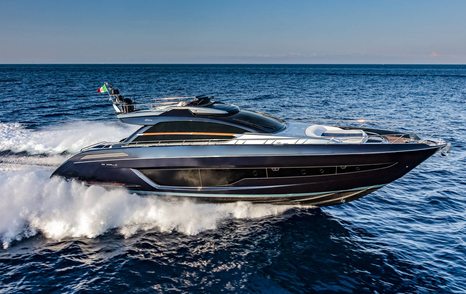
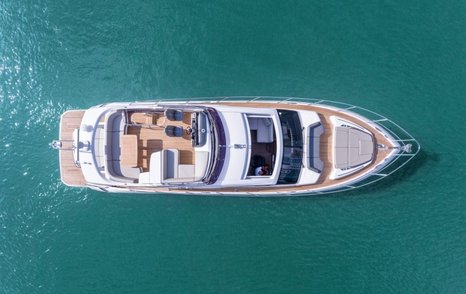
Central to the sportsbridge yacht is its performance, with powerful engines enabling higher speeds and excellent maneuverability. Despite these characteristics, they offer all the hallmarks of luxury and comfort one would expect from a high-end motor yacht.
The distinctive feature of a sportsbridge yacht is its retractable or open-top deck, often accompanied by expansive sliding glass doors. This design blurs the line between indoor and outdoor spaces, creating a seamless transition that enhances the feeling of spaciousness and connection with the elements.
The interiors of sportsbridge yachts also offer spacious cabins and saloons, with a focus on comfort and style. Versatility is also another key trait of sportsbridge yachts. They come in various sizes and styles, accommodating a range of preferences and needs.
In essence, sportsbridge yachts are a celebration of speed, agility, and luxury. They offer a dynamic and thrilling yachting experience without compromising on elegance and comfort, making them a superb choice for those who seek the best of both worlds.
Up Top
Winner: Flybridge
The sportsbridge is a great place to enjoy the ride and socialize with your guests in style and comfort. Some sportsbridge designs benefit from as much space and specification as a flybridge, but more often than not the flybridge is larger, offering more seating and dining options. The flybridge deck is often deeper too, making you feel more secure within the yacht.

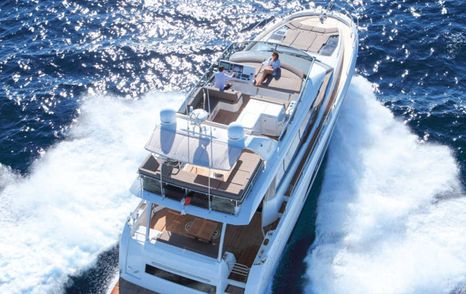
Adding a hardtop to the flybridge creates shade and promotes a feeling of structure and solidity. Onboard a flybridge there is space to spare, so the ability to make the upper deck more useable (rather than just a place to sit) is a huge benefit. Despite the sportsbridge having a wonderful elevated area, the upper deck space on the flybridge can't be beaten.

Deck Level
Winner: Sportsbridge
At deck level, there is little that separates the two yachts, with both having aft cockpits and from approximately 15m (49ft), forward cockpits too. The sportsbridge's aft cockpit, however, usually benefits from more room and works harder to impress.
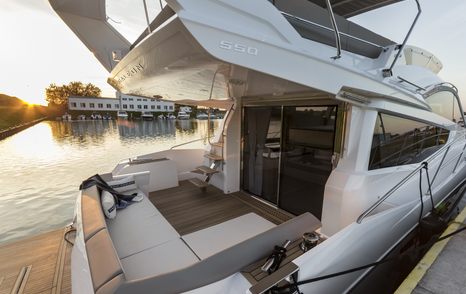
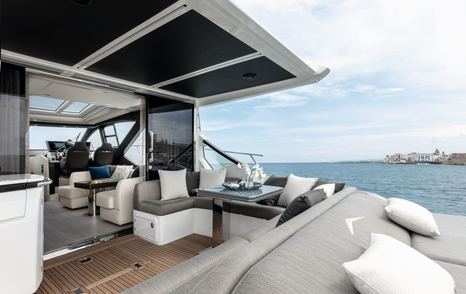
While the flybridge offers a perfectly good seating area, the sportsbridge tends to offer more sophistication. The vessel's sports yacht DNA means you will normally gain a tender garage, something that is still fairly rare onboard flybridge yachts. A sunpad top and lots of stowage will also feature.
The caveat to the sportsbridge win is side deck access. The practical cruising ideals of the flybridge usually result in decent side decks that are easy to use from and to the cockpit. If the sportsbridge yacht doesn’t do the same, its aft cockpit net benefits wouldn’t be enough.
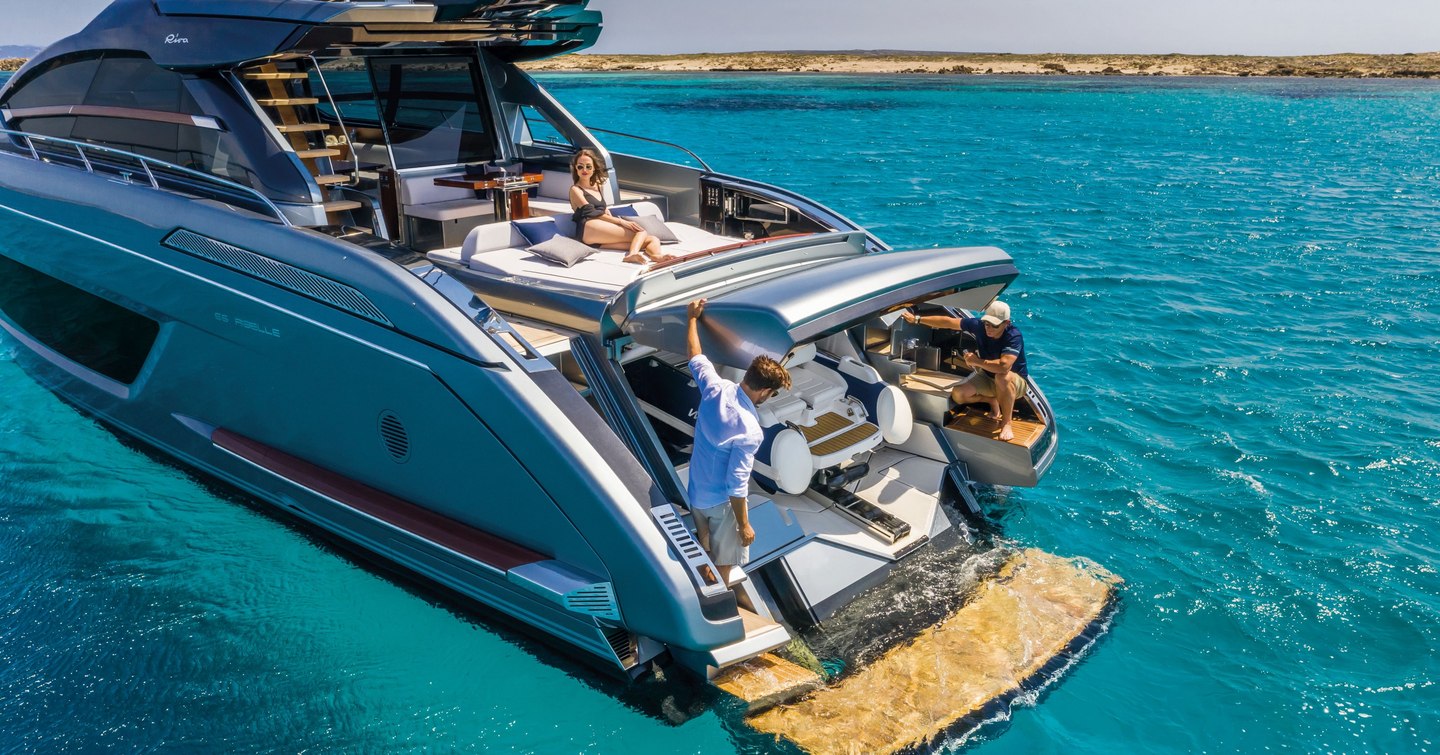
Salon
Winner: Sportsbridge
With so many salon layout options available to choose from, making a straightforward comparison is difficult. More often than not, the flybridge enjoys more space, and what it loses in aft cockpit space, it takes back in the salon. If you like to dine onboard, the flybridge's salon offers an excellent lounge, and at approximately 15m (49ft), separate dining options also become available.
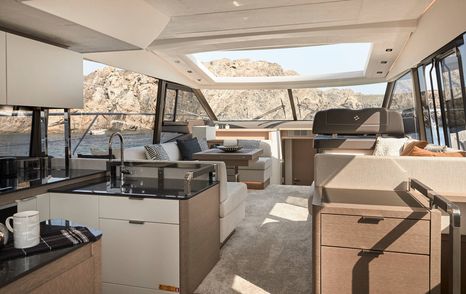
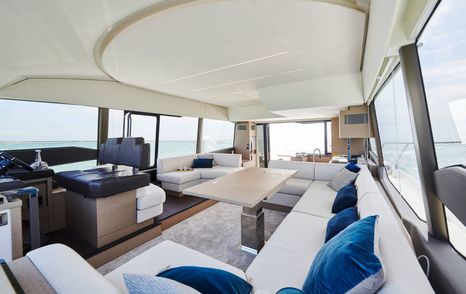
Both yachts offer bright salons flanked by huge windows, but flybridge headroom may be better, which can further enhance the feeling of space. The sportsbridge yacht’s secret weapon, however, is the optional salon sunroof, with the smaller deck space above providing the space to fit this excellent and engaging feature.
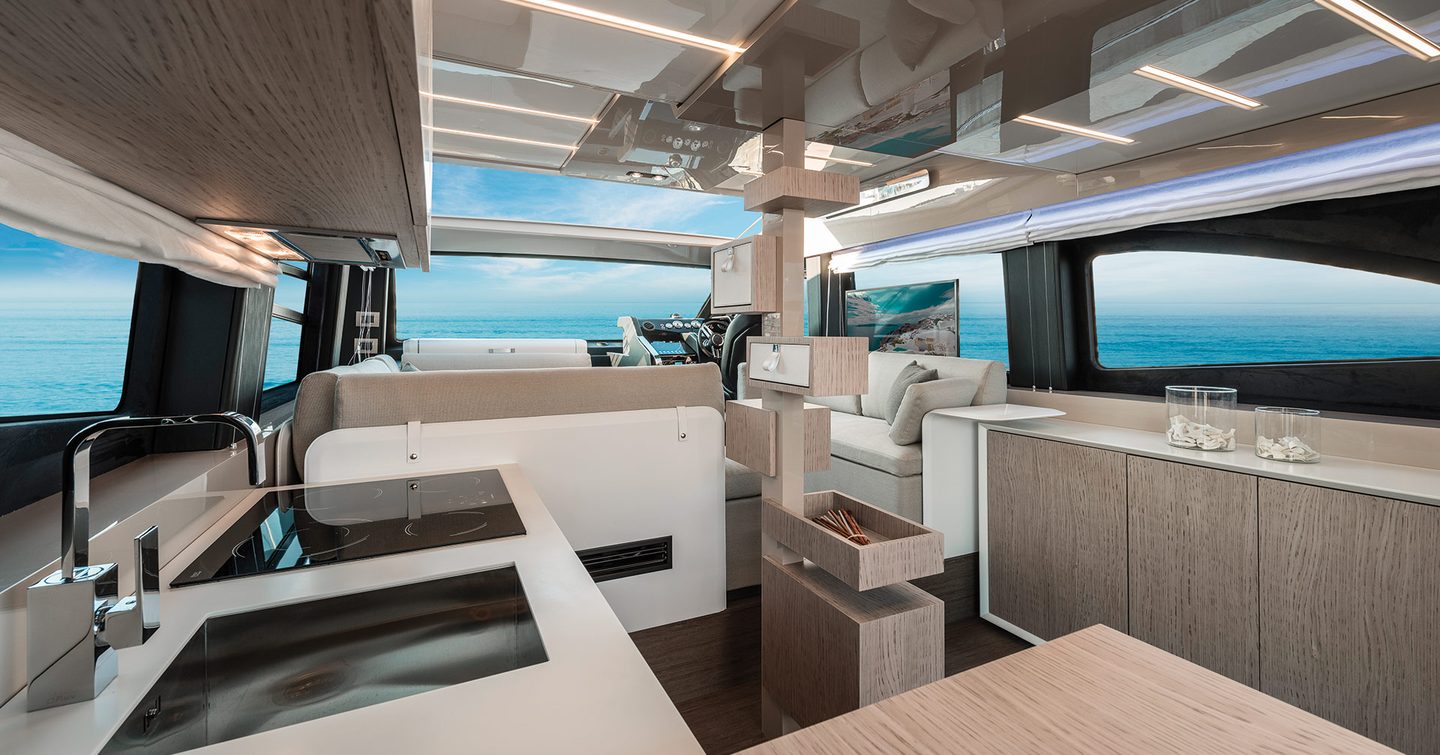
Cabins
Winner: Flybridge
The flybridge yacht's taller stature, combined with a design that ekes out every spare inch of space results in it taking the cabin win. It is also worth noting, that with many yacht models based on the same hull and deck platform, there may be little or no difference between a given builder's flybridge and sportsbridge interior volume or space.
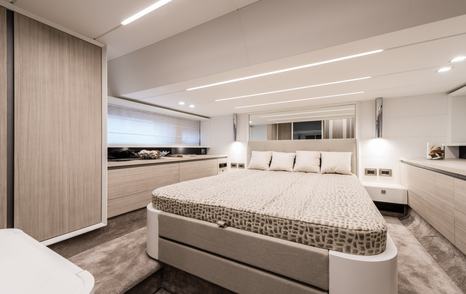

Most yachts of a given length will come with a similar layout, with a full-beam master suite amidships, enjoying excellent hull-side glass sections, and forward guest quarters. The flybridge, however, may offer more headroom throughout, making the difference between a cabin you only sleep in or actually want to relax in.
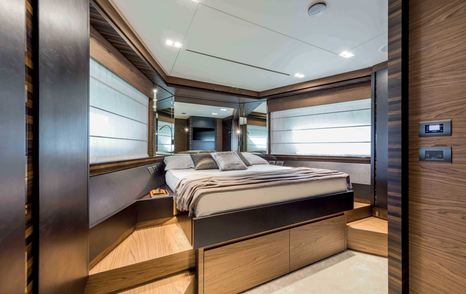
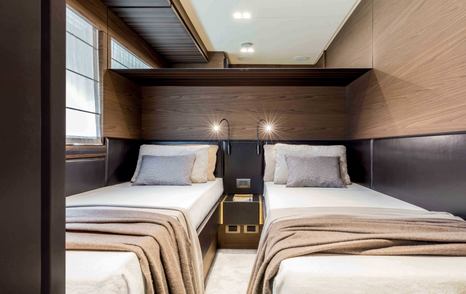
Performance
Winner: Sportsbridge
Sportsbridge yachts tend to be faster and more nimble than heavier, cruising-focused flybridges. Even if the same hull design is employed on both models, the lighter sportsbridge (due to its smaller bridge) should still have the edge, with the yacht itself usually being specified with larger engines as standard.
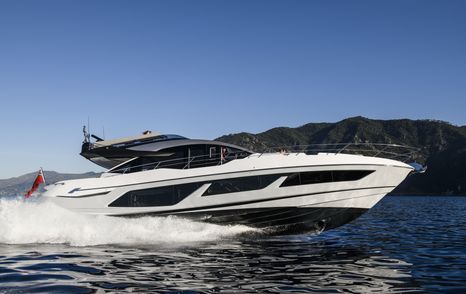
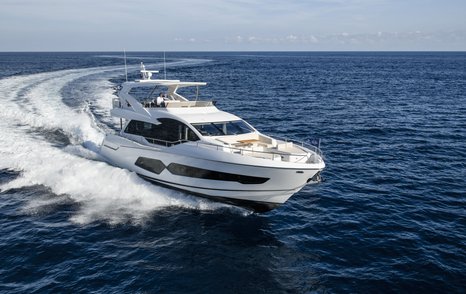
Value
Winner: Flybridge
When it comes to value, there is little that separates the two yacht types, but YachtBuyer data suggests sportsbridge prices are slightly higher, perhaps due to higher specification engines. For this reason (and due to its slightly more spacious interior), the flybridge yacht wins when it comes to value for money.
Verdict
Overall Winner: Sportsbridge
The flybridge is unarguably a great, proven yacht design that delivers on so many levels. If you want to stay onboard, care about contemporary style, and like to travel at pace, it’s a great choice. Comparatively, the sportsbridge also delivers a wide range of benefits and appeals to emotions in a way that the flybridge does not.

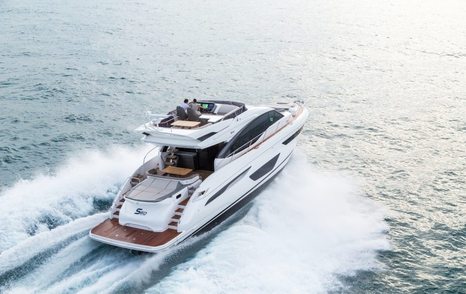
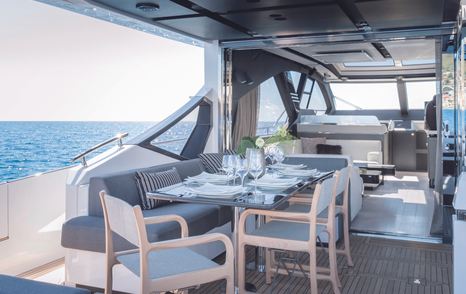
By taking the best of sports yacht and flybridge design, a sportsbridge can do everything that its two design parents offer, while also providing more. It can be as practical as a flybridge, and as cool and enjoyable as a sports yacht. But its attitude, or arrogance perhaps, makes it a thoroughly appealing yacht type, resulting in it taking the overall win.
